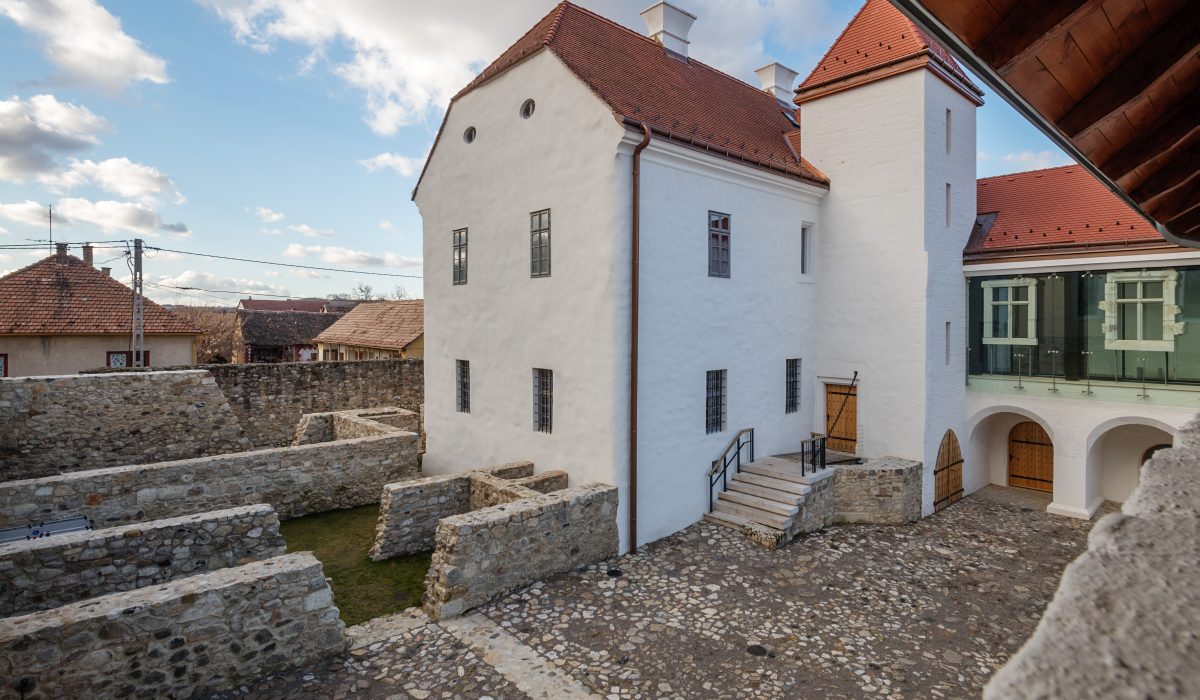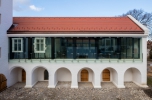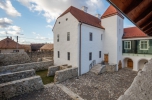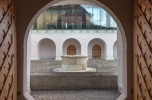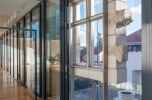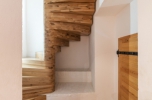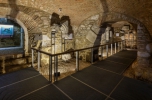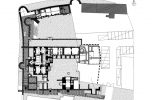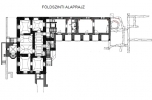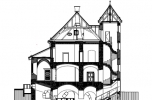Past to be Continued
Reconstruction of the Mediaeval Castle in Szászvár
Architect: János Albert
Text: Miklós Okrutay
Photos: Tamás Bujnovszky
The memories of the mediaeval castle of Szászvár, a town situated in the north-eastern part of Baranya county, had been almost completely forgotten throughout the centuries following the longish eras of the Turkish in the history of Hungary. Its very existence was only recorded for future generations in the name of the settlement itself. The heart of the former complex of mediaeval origins was the western wing of the palace erected as the first structure here back in the 14th century. Converted into a Baroque-style parish structure survived the stormy periods of history, being the only component of the whole complex to preserve a past of 500 year. It has proven to be a welcome decision to renew the main building in line with the Baroque era, which was the last complete period in the history of the house, and within this framework it also presents former periods in fragments to the extent possible. The most powerful part is the cellar where vaults built in the 18th century also allow the remains of the medieval arches to show themselves to their fullest. Besides, the reconstructed Gothic chapel on the ground floor also attracts attention, which is quite natural. Basically, it gives us the overall impression of authenticity regarding every single detail. Meanwhile the presence of the architect is also visible all throughout the complex in a series of sophisticated gestures. Its strengths are the masonry of the external walls surrounding the castle, the frames of the doors nad windows openings based on the original fragments, the sensible treatment of facade surfaces, and the method by which the changes of textures clearly distinguish the newly walled parts of the building against the universally used homogenous white palette. The transition from the direction of the church features raw concrete surfaces which are appropriately positioned, much in the same way as the details of the designs of the glass curtain wall of the northern wing. This kind of presence appears even more original in the interiors. The spiral stairs made from block timber are simply amazing and masterly, the individual exhibition units as well as the reception counter have been designed with a pleasantly dynamic tracery, and the newly made chandelier with minimalist forms has harmoniously been fitted into the domain of the Gothic-style chapel.
Leading architect: János Albert – 225D ÉpítészIroda Kft.
Architects: Ildikó Mersits – Mersits Bt., Dr. Éva Szabó – Szenga Bt.
Structure: Dr. Ferenc Metzing, László Legeza
HVAC: Gábor Bernula, József Mészáros, Zsolt Méhes
Electrical engineering: Gábor Gerber
Interiors: Gábor Virágos, Dr. Zsófia Lukács
Monument preservation expert: Lászlóné Schőner
Archaeology: Dr. Mária Gerőné Dr. Sándor, Dr. Győző Gerő, Dr. Gergely Buzás
Stone restoration: Vilmos Osgyáni
Stove restoration: László Soós, Judit Szebényi
Painting restoration: Zoltán Mauks, Csilla Mauksné Dittrich
Client: MNV Zrt.
Main contractor: Pécsi Építő és Tatarozó Zrt.
